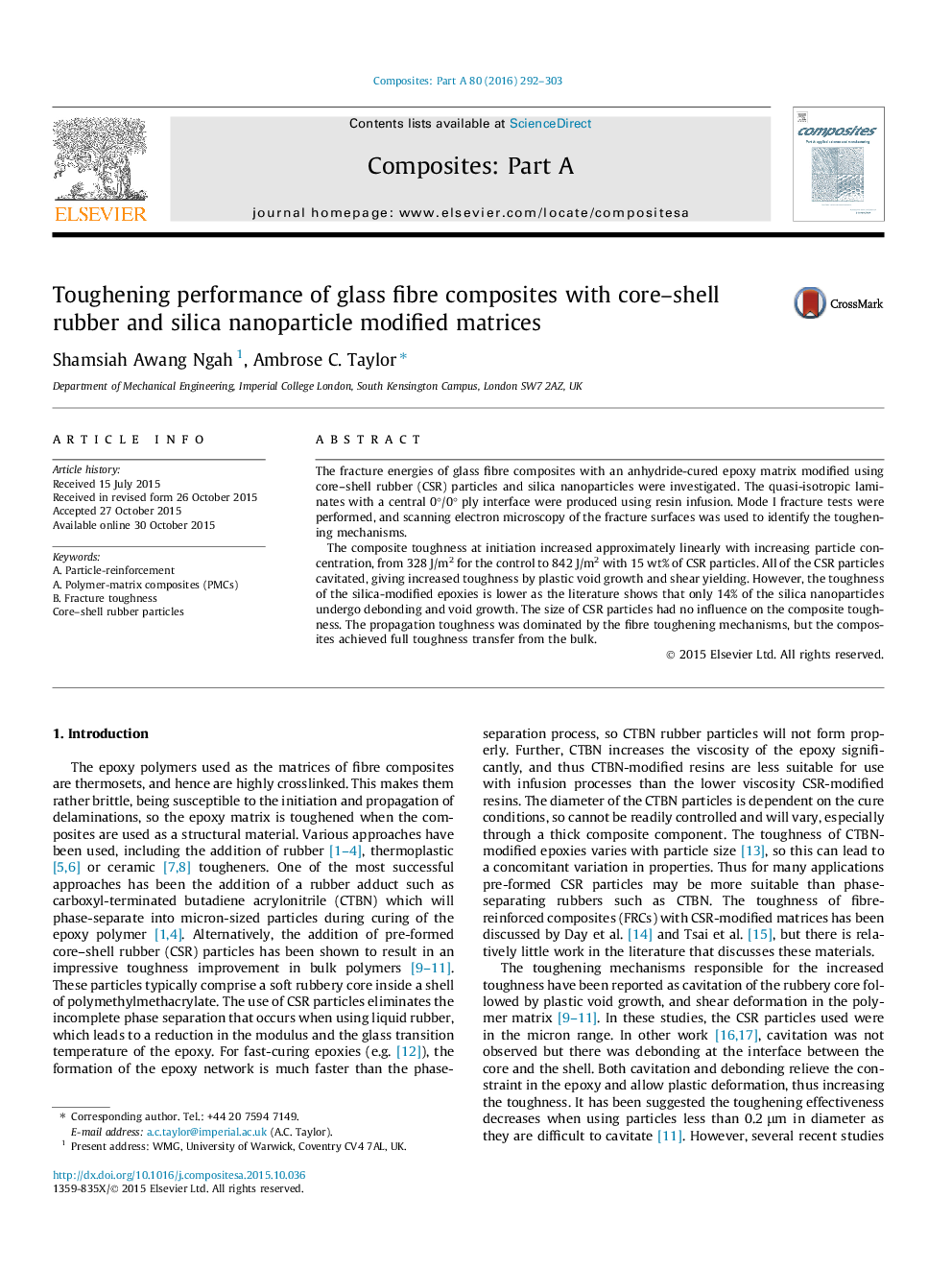| Article ID | Journal | Published Year | Pages | File Type |
|---|---|---|---|---|
| 1465828 | Composites Part A: Applied Science and Manufacturing | 2016 | 12 Pages |
The fracture energies of glass fibre composites with an anhydride-cured epoxy matrix modified using core–shell rubber (CSR) particles and silica nanoparticles were investigated. The quasi-isotropic laminates with a central 0°/0° ply interface were produced using resin infusion. Mode I fracture tests were performed, and scanning electron microscopy of the fracture surfaces was used to identify the toughening mechanisms.The composite toughness at initiation increased approximately linearly with increasing particle concentration, from 328 J/m2 for the control to 842 J/m2 with 15 wt% of CSR particles. All of the CSR particles cavitated, giving increased toughness by plastic void growth and shear yielding. However, the toughness of the silica-modified epoxies is lower as the literature shows that only 14% of the silica nanoparticles undergo debonding and void growth. The size of CSR particles had no influence on the composite toughness. The propagation toughness was dominated by the fibre toughening mechanisms, but the composites achieved full toughness transfer from the bulk.
